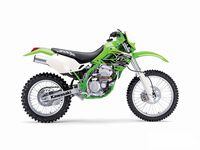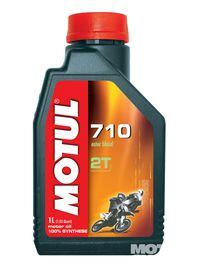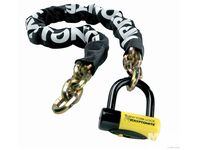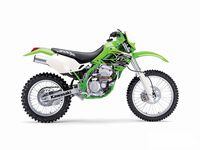Got a question for answers? Send it to mcmail@sorc.com
Burn it or Bin it?
Q I'm finishing up a fairly major restoration of everything but the engine on a 1976 Yamaha RD400. The Autolube tank was clean and full when I bought the bike a few years ago, and the guy who sold it to me threw in a dozen fairly new-looking bottles of two-stroke injector oil. There's no crud in, on or around the tank. And from what I can see, all the lines look good. Can I get away with running injector oil of unknown vintage? What about the stuff in those bottles? Do dead dinosaurs go south after a few years? I figure they're about 5 years old at this point.
Levi Nelson
Brooklyn, NY
A A nice Cabernet Sauvignon gets better with age. But according to Dave Wolman at Motul-purveyors of high-performance lubricants for 150 years-oil doesn't. "Shake a bottle of two-stroke injector oil. Solvents in the formula that let it flow through those tiny injector lines make it about 60 percent thinner than the kind you pre-mix with gasoline. Once they evaporate, the oil is too thick. I'd start by mixing some oil with the fuel. You'll probably be running too rich at first, but too much oil is a whole lot better than no oil at all.
"With the bottles, you're looking at a proper 2-year shelf life. You might add a couple more years to that, but how long it lasts really depends on the porosity of the bottle. If you have a white bottle that's been turned blood-red by the oil inside, you've got a problem. Those solvents have leached into the plastic, and there's plastic dissolved in the oil. At that point, they belong in an oil recycling bin instead of your motorcycle."
Out in the Open
I am in a position that requires me to leave my 2005 Suzuki Hayabusa outside with only a cover to protect it. What are my main concerns, and what do you suggest to provide the best protection?
David Surles
Fort Mill, SC
According to Detective Martin Bolger of the San Diego Regional Auto Theft Task Force, think prevention first and recovery second. "Before doing anything else, get a high-quality chain," he says. "You'll spend $100-$300 for a good one, but it's worth it. Look for chains made from carbon-manganese alloy steel with boron or something similar. The Almax Immobilizer IV and Kryptonite Fahgettaboudit are both good. Watch the videos at www.almax-security-chains.co.uk to see just how easy it is to cut through various chains. You get what you pay for. Always chain the bike to an immovable object. And never let the chain lay on the ground. It's much harder to cut that way. Park the bike as close to your bedroom window as possible. Most thefts occur late at night or very early in the morning. If the thieves want to ride your bike away, they also have to break the steering-lock pin. On some bikes, that sounds like a firecracker-enough to wake you up. Park in a well-lit area, and an alarm system wouldn't hurt either. Use a cover if you can, secured with a small lock so it doesn't blow away. If the bike is stolen after all that, GPS and Lojack recovery systems will help."
Boiling Point
After a long hiatus, I rediscovered the joys of trail riding by purchasing my first four-stroke dirtbike: a used 2001 Kawasaki KLX300R in good condition. After following my young son on his little Honda CRF70 up a hill for 5 minutes or so, the coolant boiled out of the overflow bottle. I let it cool down and refilled the tank, but for the rest of the day I heard a bubbling noise (no more boil-over, though) from the radiator after I shut it down-even after faster, second- and third-gear runs. Is this simply a characteristic of a radiator with no fan? Can it be avoided? Is it a water-pump problem perhaps? How fast is fast enough to keep it cool?
Doug Abbott
Denver, CO
Yes, yes and not exactly. Generally speaking, liquid-cooled dirtbikes get hot in slow going because there's not enough air moving through the radiators. How fast you need to go to keep things cool depends on ambient temperature, among other things. But Team Green moto-guru Ryan Collins figures your cooling system needs to be burped. Why? "It was okay before you got it hot and pushed all of the coolant out, and hasn't lost any coolant since being refilled," he says. Then there's that bubbling noise. "The cooling system needs to be free of trapped air to generate the suction required to pull fluid from that overflow reservoir back to the radiators. There's a bleeder bolt on the left radiator. Remove or crack the bolt, then fill the radiator until coolant comes out. Tighten the bolt, fill the radiator the rest of the way and install the radiator cap. The KLX300R comes with a 1.1 radiator cap, but I'd recommend going to a 1.6 (part number 49085-1073) to help pressurize the system and lower coolant temperature. I'd also check the overflow reservoir and the hose that feeds it from the radiator. Make sure there's a good seal and no kinks. Fill the overflow reservoir with fluid. Start the bike and let it idle till it's good and hot, which will push the coolant and air into the reservoir. Shut it off, and as the system cools, it should draw coolant from the reservoir to refill the radiator."















/cloudfront-us-east-1.images.arcpublishing.com/octane/FZXHNOQRNVA3BIDWAF46TSX6I4.jpg)
/cloudfront-us-east-1.images.arcpublishing.com/octane/JRSFLB2645FVNOQAZCKC5LNJY4.jpg)
/cloudfront-us-east-1.images.arcpublishing.com/octane/ITNLTIU5QZARHO733XP4EBTNVE.jpg)
/cloudfront-us-east-1.images.arcpublishing.com/octane/VZZXJQ6U3FESFPZCBVXKFSUG4A.jpg)
/cloudfront-us-east-1.images.arcpublishing.com/octane/QCZEPHQAMRHZPLHTDJBIJVWL3M.jpg)
/cloudfront-us-east-1.images.arcpublishing.com/octane/HXOUJXQWA5HBHGRO3EMJIGFMVI.jpg)

/cloudfront-us-east-1.images.arcpublishing.com/octane/3TIWWRV4JBBOLDVGRYECVVTA7Y.jpg)
/cloudfront-us-east-1.images.arcpublishing.com/octane/KIX5O23D5NAIBGFXBN3327DKZU.jpg)
/cloudfront-us-east-1.images.arcpublishing.com/octane/7GJYDUIPXRGMTMQKN6ONYOLBOU.jpg)
/cloudfront-us-east-1.images.arcpublishing.com/octane/MUQLOVLL2ZDGFH25ILABNBXKTI.jpg)
/cloudfront-us-east-1.images.arcpublishing.com/octane/TNOU5DNE2BC57MFPMGN2EIDXAM.jpg)
/cloudfront-us-east-1.images.arcpublishing.com/octane/GTCXACQGJ5HAPDTGWUQKDEH44E.jpg)
/cloudfront-us-east-1.images.arcpublishing.com/octane/S35YGSEMEZB4BLTDJTSZPF4GLA.jpg)
/cloudfront-us-east-1.images.arcpublishing.com/octane/5UOT6HPX2JFMRJAX6EH45AR4MQ.jpg)
/cloudfront-us-east-1.images.arcpublishing.com/octane/OKWOJWAKP5EP3OACCRRWPCIX2Q.jpg)
/cloudfront-us-east-1.images.arcpublishing.com/octane/2WF3SCE3NFBQXLDNJM7KMXA45E.jpg)
/cloudfront-us-east-1.images.arcpublishing.com/octane/G4MG6OUCJNBSHIS2MVVOTPX65E.jpg)
/cloudfront-us-east-1.images.arcpublishing.com/octane/IIGGWFOTOJGB7DB6DGBXCCMTDY.jpg)
/cloudfront-us-east-1.images.arcpublishing.com/octane/QSTCM6AVEZA5JJBUXNIQ3DSOF4.jpg)
/cloudfront-us-east-1.images.arcpublishing.com/octane/U4I7G625B5DMLF2DVIJDFZVV6M.jpg)
/cloudfront-us-east-1.images.arcpublishing.com/octane/B6XD6LS6IVCQPIU6HXDJSM3FHY.jpg)
/cloudfront-us-east-1.images.arcpublishing.com/octane/ICL63FEDDRDTTMINYICCEYGMDA.jpg)
/cloudfront-us-east-1.images.arcpublishing.com/octane/FCGZHQXRBZFLBAPC5SDIQLVF4I.jpg)